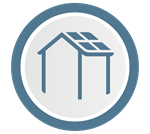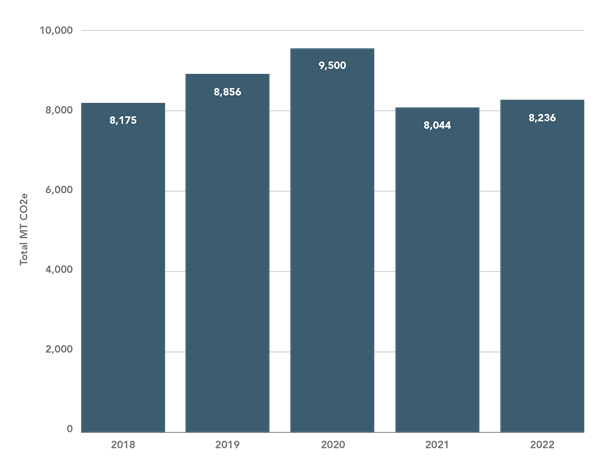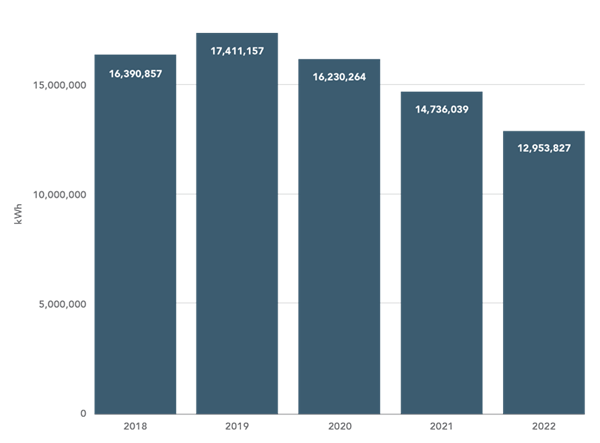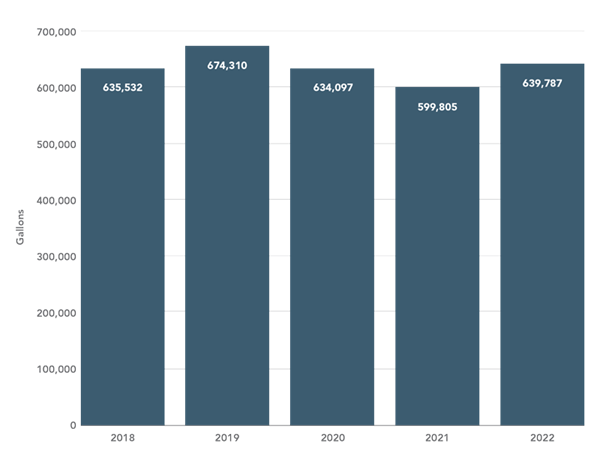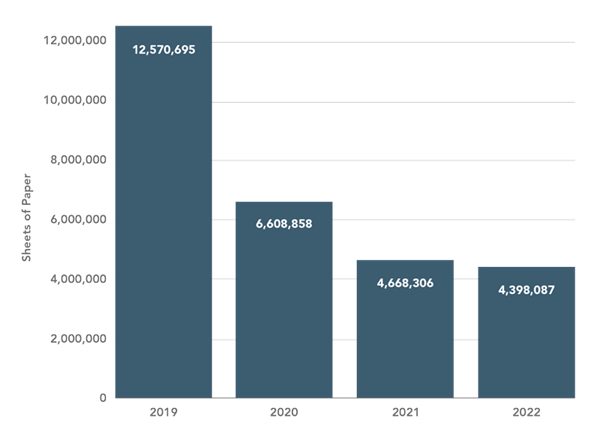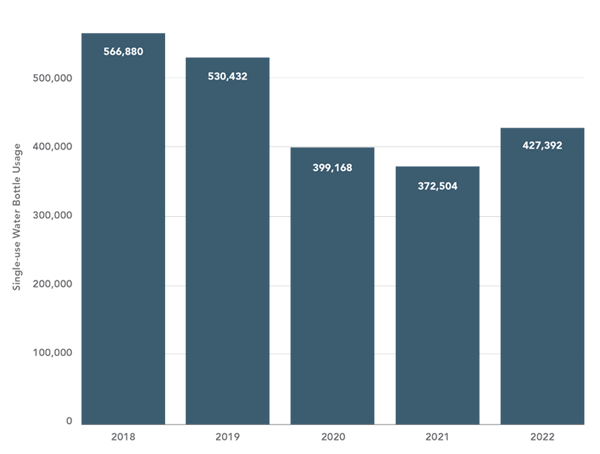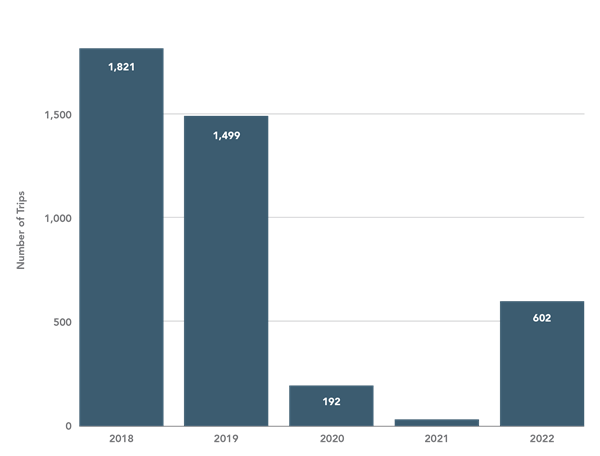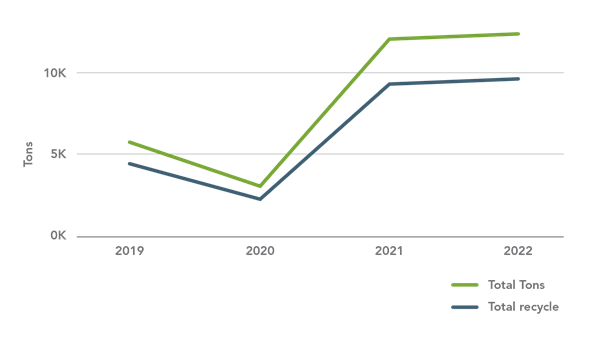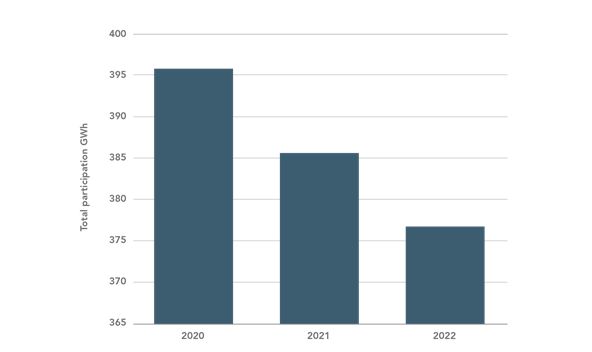Leading the way to a carbon-free future
A message from our CEO & General Manager Paul Lau
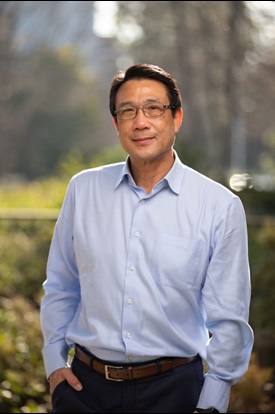
SMUD’s commitment to sustainability is bold, innovative and deeply rooted in our commitments to our customers and community. Today, we have the most ambitious clean energy goal of any large utility in the United States.
Our Zero Carbon Plan puts us on a flexible pathway to eliminate carbon emissions from our power supply by 2030. It’s grounded in the guardrails of reliability, affordability and equitable solutions.
And we’re not stopping there. We’re taking action in our own business practices, modernizing our supply chain, electrifying fleet operations and creating a culture of change in employees’ behaviors and practices.
Nestled in the heart of Sacramento, we've cultivated robust partnerships locally and nationally and have consistently earned top marks in customer satisfaction and sustainability.
As an industry and community leader, local partner and responsible employer, we’re committed to making sure all customers and communities benefit from our 2030 Clean Energy Vision.
Under-resourced communities are among the most impacted by climate change. That’s why we’re focused on bringing accessible clean energy solutions and programs to our customers and stimulating inclusive economic development with a goal of attracting new businesses and services to our area.
We’re leading by example, and together we’re creating a future that shines brighter, cleaner and greener for all.
Four areas of 2030 Zero Carbon Plan
Four key areas guide our plan. We will achieve our zero carbon goal by finding mutually beneficial solutions as we reaffirm our commitment to being inclusive, supporting regional innovation, supporting clean tech jobs and attracting clean energy investments to the region through collaborative partnerships.
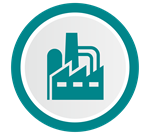
Natural gas generation repurposing
Proven clean technology
New technology and business models
Financial impacts and options
Awards
SMUD is continually being recognized as an industry leader for our expertise, vision, programs and services we offer to customers and our community. Each year, we accumulate a lengthy list of accolades, awards and accomplishments. By continuously demonstrating leadership, innovation and cutting-edge technology, we're reshaping our energy future.
CDP
J.D. Power
Walking the talk: SMUD's Sustainable Operations Plan
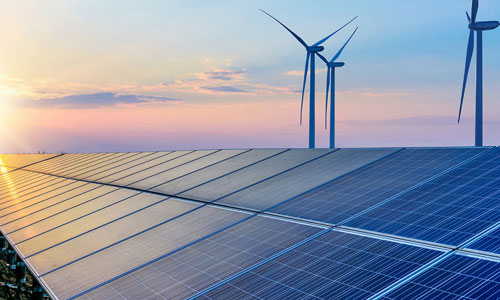
SMUD’s original sustainability plan was drafted in 2017 with a 3-year outlook. When the 2030 Clean Energy Vision was announced, we aligned the sustainability plan with the vision.
The Sustainable Operations Plan focuses on the emissions associated with our fleet and buildings; reducing SMUD’s impact on the environment by reducing water use and minimizing waste; working with our contractors to reduce their impacts on the environment; and building an internal diverse team that will support communication on our sustainability efforts.
Focus areas
The Sustainable Operations Plan consists of 6 focus areas. Each area contains tactics for implementation between 2022-2024. Fifty-five tactics have been identified and of those, 37 are in progress with funding. The balance of unfunded tactics will be implemented in the future. Significant progress and successful implementation is evident in each of the 6 focus areas:
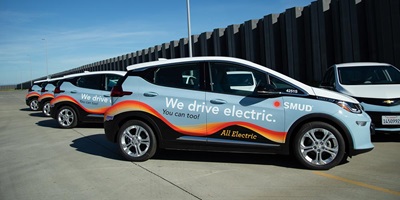
- In affecting Scope 1 (direct emissions), SMUD developed a fleet acquisition policy to prioritize zero emission vehicles and electrification of equipment. A process was initiated to better identify potential opportunities to reduce fleet emissions through actions such as vehicle electrification, renewable diesel and reducing idle time. The installation of new GPS equipment will help track this information more accurately.
- SMUD offers a broad range of programs to incentivize employee participation in reducing work trips, cutting commute time and reducing emissions. A partnership with Sacramento Regional Transit District provides employees reduced fare tickets for light rail transportation. Encouraging the use of electric vehicles (EV), SMUD offers EV purchase discounts and workplace charging opportunities. In 2022, over 1,000 of SMUD’s employees participated in remote work agreements, which included full remote and hybrid office/remote work structures. Annually, SMUD participates in a statewide Clean Air Day challenge with activities, incentive programs and support for reduced vehicle trips, increased bicycle and alternative transportation use and other avenues to achieve cleaner air throughout the service area.
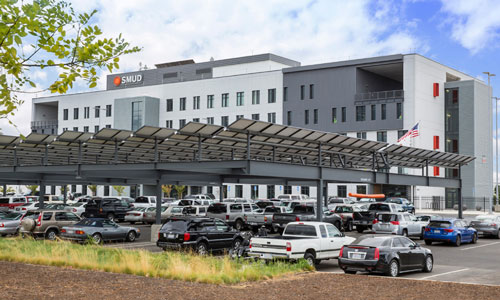
- SMUD continues to participate in green business certification programs. Our East Campus Operations Center (EC-OC) building was certified by the Sacramento County Business Environmental Resource Center (BERC) in 2022 and the remodeled Headquarters (HQ), Customer Service Center (CSC) and Field Reporting Facility (FRF) buildings were BERC certified in 2023.
- Installing native, drought tolerant landscaping is critical to minimizing water usage. In 2023, SMUD initiated a campus landscaping project to replace the decorative grass around the HQ, CSC and Energy Management Center (EMC) buildings with drought tolerant Kurapia sod. Existing sod was cleared, spray irrigation was refurbished, soil was prepared and the sod was replaced.
- Reducing air emissions through fleet electrification is in direct alignment with the 2030 Zero Carbon Plan. We’ve installed 28 new EV chargers around campus buildings and added light duty Zero Emission Vehicles to SMUD's fleet. Additionally, 10 EV trucks were ordered from Ford.

- SMUD has implemented the Supply Chain Risk Management Framework which leverages a matrix to identify the most critical materials, services and technologies. An annual review process for this framework was put in place, as well as a process for quarterly mitigation plan updates in key categories.
- Additionally, SMUD conducts an annual Sustainable Supply Chain Alliance (SSCA) The Sustainability Project (TSP) survey for suppliers. Eighty-five percent of suppliers responded to the 2022 survey.

- We're developing a proposed framework for climate adaptation management for use across SMUD's functions that focuses on 2030 Zero Carbon Plan execution and ensures SMUD meets industry and market standards. We're also assessing available climate data and tools to support internal decision-making.
- Transmission line designers are considering the use of an occasional steel pole to provide stability in high-wind areas and minimize the risk of the line being blown over. The substations team has also started to incorporate flooding risks in their substation design.
- The Habitat Conservation Plan (covering operations, maintenance and new construction) and application was submitted to the U.S. Fish and Wildlife Service and California Department of Fish and Wildlife.
- The Right-of-Way Stewardship Council (ROWSC), an accreditation program that establishes standards for responsible environmentally sustainable right-of-way vegetation management, re-accredited SMUD with a “Right-of-Way Steward Award” for our sustainable integrated Vegetation Management on our electric transmission right-of-way systems. The re-accreditation went into effect at the end of 2022 and lasts for 5 years. The ROWSC Accreditation program evaluates environmental stewardship standards of excellence for utility vegetation management along rights-of-way. The goal of the program is to promote and recognize vegetation management industry best practices that maintain and protect grid reliability, safety and provide ecological and natural resource, species and habitat benefits.

- Continuing our decades-long participation in organizations benefiting the community, SMUD is an active member in environmental organizations such as Valley Vision, Business Environmental Resource Center (BERC), Sacramento Transportation Management Association (TMA), Capital Region Climate Readiness Collaborative (CRCRC) and Sacramento Environmental Commission (SEC).
- SMUD provided $15,000 to Valley Vision in 2022 to support the Cleaner Air Partnership (CAP). CAP is a collaboration between Breathe California Sacramento Region, the Sacramento Metropolitan Chamber of Commerce and Valley Vision. SMUD has been a member of CAP since 2018, and staff participates actively in its Executive Committee, on the Air Quality Team during the Metro Chamber’s annual Cap-to-Cap federal advocacy program to Washington, D.C. and CAP Quarterly Luncheons.
- By participating in community events such as Earth Day and Clean Air Day, SMUD sends a clear message to employees and customers alike that a clean energy future is achievable – and necessary. In 2022, SMUD exceeded the stated goal of 30% employee participation in California Clean Air Day.
Where we're at
We continue to make progress toward our goals. Check out how we're doing.
A carbon footprint is the total amount of greenhouse gasses that are generated by our actions. Some examples of SMUD’s carbon impacts are electricity usage, fuel purchases and air travel. By tracking our progress against a baseline, SMUD creates accountability in our actions and goals for further reductions.
Total metric tonnes of carbon dioxide equivalent by year
SMUD tracks and collects data on emissions from the fuel used in our mobile fleet, electricity consumed at SMUD buildings and any fuel used for comfort heating at Upper American River Project (UARP) facilities. This data reflects a total from both anthropogenic and biogenic emissions (from usage of renewable biodiesel in some fleet vehicles). Also included are estimated emissions savings from employees using rideshare programs.
SMUD's electricity usage by year (kWh)
SMUD collects data on energy used at all SMUD buildings. Total energy used is shown based on metered data. This also takes into account any solar electricity generated at the East Campus Operations Center (ECOC).
Gallons of fuel purchased by year
SMUD’s fleet of forklifts, heavy construction equipment, trailer mounted generators, boats, cars, trucks and SUVs use fuel obtained both on site at the main campus and the Upper American River Project, as well as through fueling stations. Data is collected, compiled and reported to internal business partners on a quarterly basis. Data collected includes the type of fuel, location, date and vehicle ID.
Sheets of paper used by year
SMUD boasted almost 11% reduction in paper use, year-over-year in 2022. Even as use is declining, we continue to evaluate the programs that use printed materials and collaborate within departments on reducing paper usage. This is being accomplished by analyzing content, relevancy, design, volume, frequency and end use goals.
Single-use water bottles used by year
SMUD continues to evaluate options for providing hydration, especially to field staff who typically encounter 100+ degree temperature days July through September. Concerns include health and hygiene, along with durability of any product.
Number of air travel trips
The COVID pandemic had a dramatic effect on air travel in 2020 and 2021. Travel began to rebound in 2022 as health and travel concerns lessened. SMUD encourages employees to exercise good judgement in using air travel, considering options for virtual and local meetings first, with particular focus on rideshare and mass transit.
Waste diversion is the process of diverting waste from landfills. SMUD has focused on keeping materials such as concrete, metal and wood out of the waste stream. Creating goals for waste diversion has resulted in consistent reductions. It's also spurred creative thinking and partnerships for material reuse, resulting in cost savings.
2022 waste diversion statistics
 |
 |
 |
|---|
Total tons of waste and recycled material
Top recycled materials
| |
|||
|---|---|---|---|
Concrete |
Transformers |
Transformer oil |
Wood |
Greenergy is a program that allows customers to elect the use of renewables from state and local renewable energy sources with a small charge to residential or commercial billing. SMUD’s sources for Greenergy are solar, wind and large hydroelectric. As a newer option for Clean PowerCity® Champions, our Greenergy program is poised for growth. Renewable energy sources are key to improve our air quality and create a better, cleaner environment.
| |
Our energy outlook Get current information on usage, forecasted peak and our renewable energy mix. |
| |
View our progress to a carbon-free future Get the latest data on our carbon emissions and customer enrollment in our clean energy programs. |
Investing in our community
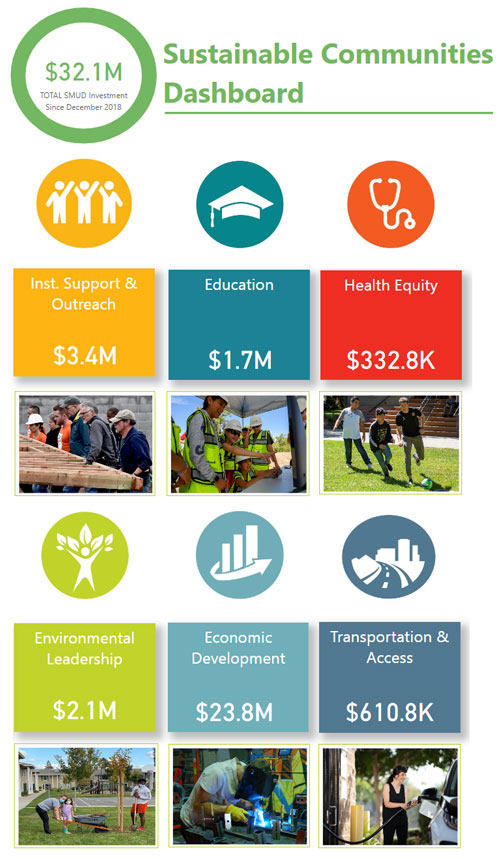
By aligning our Sustainable Communities efforts with the 2030 Zero Carbon Plan, we’re ensuring that all communities in Sacramento share in the benefits of the clean energy transition, including health benefits from improved air quality, new jobs, and resilience to climate change.
In 2019, we created the Sustainable Communities Resource Priorities Map, which analyzes current data to identify the local areas most likely to be under-resourced or in distress due to lack of community development, income, housing, employment opportunities, transportation, medical treatment, nutrition, education and clean environment. This map allows SMUD to analyze how various energy programs and projects can be enhanced or expanded to improve equity, incorporating what community members themselves feel is needed to achieve a more equitable energy future. In 2023, the map was updated to include the Justice 40 Climate and Justice Economic Screening Tool, CalEnviroScreen 4.0, English ability and linguistics isolation and digital inclusion data.
To answer the call for a just and equitable clean energy transition, we developed our Community Impact Plan (CIP) in 2022, magnifying the commitment to make meaningful investments in under-resourced communities to ensure their participation in a clean energy future. Since the launch of our Community Impact Plan, we’ve diversified clean energy programs to make them accessible to more residential customers, created equitable pathways to living wage zero carbon jobs through regional workforce outreach, education and training and focused on investing in the small business community through meaningful and impactful partnerships.
In 2022, as part of the Station H mitigation plan, SMUD coordinated with United Auburn Indian Community, Wilton Rancheria, Ione Band of Miwok Indians and Shingle Springs Band of Miwok Indians, to develop a partnership with American River College’s Native American Resource Center to benefit Native students in the region. This 3-year partnership includes support for the American Indian Summer Institute, an in-person summer bridge program for local Native youth and helped establish the Elder-in-Residence program which is designed to perpetuate the practices of traditional cultural and ecological knowledge.




